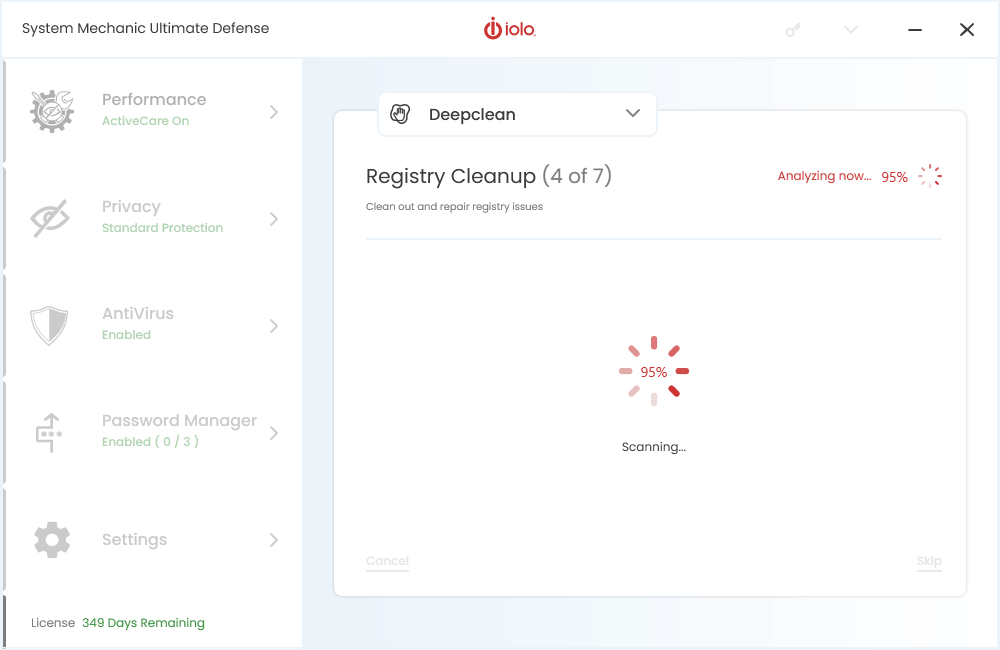Windows Registry

Windows registry – the mysterious part of Windows operating system.
Windows operating systems cannot function without a registry. When it becomes cluttered or corrupted, the overall condition of your computer declines.
Windows registry can be maintained manually. This is something the majority of people does not do. There are tools that can be used to maintain the registry, but they are not all the same.
What is Windows Registry?
MS Windows registry is one of the most important components of the operating system that runs on your your PC computer. Registry holds settings needed by hardware, software, the Windows operating system, and other software installed.
How is Windows Registry Organized?
The registry is organized as a hierarchical database that stores the values of variables in Windows and the applications and services that run on Windows.
Windows Registry Main Components
The organization of Windows registry is based on two main components: keys and values. Registry keys are container objects similar to folders. Registry values are non-container objects similar to files. Keys may contain values and subkeys.
Windows comes with predefined keys in the root of the registry. In Windows 10, they are:
- HKEY_CLASSES_ROOT (HKCR) – Contains file name extension associations and COM class registration information. In other words, it includes information about registered applications, such as file associations and OLE Object Class IDs, tying them to the applications used to handle these items.
- HKEY_CURRENT_CONFIG (HKCC) – Contains a kind of real-time profile information. It is empty, but populated at the boot time, from current hardware profile of the local computer system. It is a shortcut to the HKEY_LOCAL_MACHINE.
- HKEY_CURRENT_USER –
- HKEY_CURRENT_USER_LOCAL_SETTINGS – defines preferences of the current user that are local to the machine. These entries are not included in the per-user registry portion of a roaming user profile.
- HKEY_LOCAL_MACHINE (HKLM) – Settings that are specific to the local computer. Defines the physical state of the computer, including data about the bus type, system memory, installed hardware and software, device drivers, and startup control parameters.
- HKEY_PERFORMANCE_DATA – Contains entries that allow you to access performance data. The data is not actually stored in the registry; the registry functions cause the system to collect the data from its source.
- HKEY_PERFORMANCE_NLSTEXT – Registry entries in this key reference the text strings that describe counters in the local language of the area in which the computer system is running. These entries are not available to Regedit.exe and Regedt32.exe.
- HKEY_PERFORMANCE_TEXT – Registry entries subordinate to this key reference the text strings that describe counters in US English. Like for the previous key, these entries are not available to Regedit.exe and Regedt32.exe.
- HKEY_USERS – Entries define the default user configuration for new users on the local computer and the user configuration for the current user.
Each key can contain both subkeys and data entries called values.
How is Windows Registry Stored on a PC?
Even though the registry presents itself as an integrated hierarchical database, branches of the registry are actually stored in a number of disk files called hives. A registry hive is a group of keys, subkeys, and values in the registry that has a set of supporting files that contain backups of its data.
How Should Registry be Maintained?
Windows registry is of extremely complex structure, with numerous entries. An installation of a single software instance creates entries in multiple registry location. Therefore, it is highly risky to maintain the registry manually, unless doing one or two changes or deletions based on the instruction from a trusted source, like Microsoft for example.
Tools like those built in System Mechanic or System Mechanic Pro help in constant registry maintenance while ensuring no mistake is made. This software removes references to invalid information contained in the Windows Registry. It can also compress and optimize your Windows registry for optimal performance. System Mechanic Ultimate Defense comes with the Registry Cleanup tool (screenshot below). The tool helps you clean out and repair registry issues.

